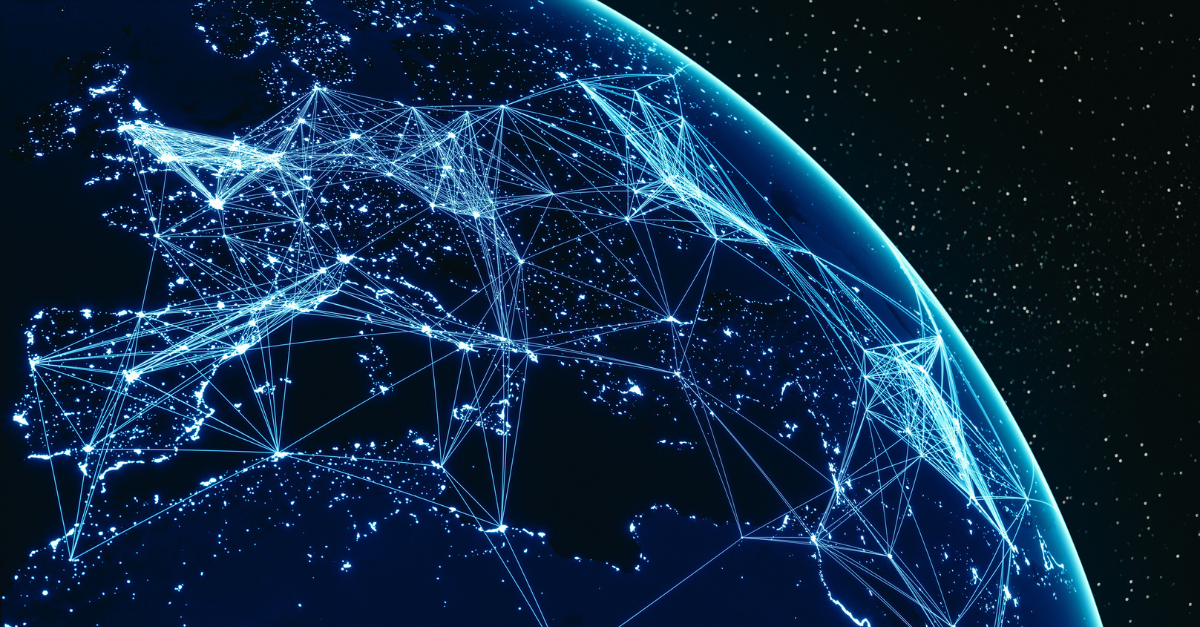It has been over three years since the global COVID-19 pandemic had widespread effects on society, including rapid technological developments. During the pandemic, we saw the adoption of increased automation procedures and technologies to reduce the amount of interpersonal physical interaction. E-commerce thrived like never before. Meanwhile, cybersecurity has become an issue of paramount importance in the face of several large-scale cybercrime attacks.
When it comes to the Internet of Things, or IoT, the coronavirus sparked new uses for pre-existing technology. Drones were deployed to deliver medical supplies in China, while governments utilized automatic sensing devices and Bluetooth-enabled gadgets to track potential contagions.
Now that the pandemic has subsided in intensity, we are entering the next phase of society: the post-pandemic era. Incorporating both permanent and temporary shifts concerning the pandemic, our societal approach to the Internet of Things looks different now than it did before 2020. In this article, we will take a look at how the IoT has continued to evolve and find its place in the market since the pandemic. We will focus on specific IoT innovations that are set for success now, and we will examine the potential cybersecurity risks of contemporary IoT devices and gadgets.
Post-pandemic IoT Networks
The Internet of Things market has become more robust since the pandemic. After a dip in demand, the global IoT market is expected to grow from $478 billion in 2022 to $2,465 billion by 2029 according to expert predictions. The IoT market is expected to open new business opportunities and revenue streams, improve business management, and facilitate new service delivery across fields.
1. Manufacturing
The sector with the greatest market potential for IoT development is manufacturing. IoT networks and devices will be used to make manufacturing processes more efficient, optimize communications between employees and management, and streamline asset management in day-to-day operations.
Since IoT facilitates seamless remote interactions, manufacturing facilities can now include employees and assets spread across a broad geographical range.
The market for IoT solutions is proving most viable in factory settings, according to expert predictions. In the manufacturing field, IoT networks can be utilized to help combat ongoing supply chain issues that arose during the pandemic. The rise of the industrial IoT, however, has also made it an increasingly attractive target for cybercriminals. This is why securing Industrial IoT devices will also need to become a bigger priority for businesses as well.
2. Smart Cities
The evolution of smart cities has accelerated now that normal urban infrastructures have returned, post-pandemic. This prevalence of smart city IoT development reflects a general trend towards interconnected IoT systems, and away from simply focusing on specific IoT devices.
Smart city solutions such as smart pollution meters, smart waste management controllers, smart air quality trackers, and smart grids, are being widely adopted. These citywide initiatives can sync with personal individual devices, making personal IoT devices more valuable and effective.
In Saudi Arabia, there are currently several active multibillion-dollar contracts to construct new smart cities using cutting-edge technology. This includes NEOM, which is planned to be a hyperconnected mega-city with a zero-carbon environmental impact.
3. Internet of Medical Things (IoMT)
The human health sector is the second largest area of market growth for IoT value. IoT interventions in the human health sector could reach $1.8 trillion by 2030, with most of the value coming from applications that directly affect the human body.
Since the pandemic, the value of the IoMT, the Internet of Medical Things, has increased. The IoT can be used by medical professionals to collect and share data with patients directly. Many medical clinics are increasingly relying on direct messaging software to stay in touch with patients for a variety of purposes including providing medical updates, collecting payments, and scheduling and confirming upcoming appointments.
But the IoT can enable clinics to take patient communication and monitoring to the next level. Patients suffering from chronic diseases can utilize IoT-enabled monitors, syncing heart rate, glucose levels, and other key medical information directly with healthcare professionals. Remote patient monitoring allows caregivers and physicians to make swift diagnoses and real-time decisions around best practices for care.
Some insurance companies and governments have begun to offer IoT solutions as a viable form of standardized healthcare, while virtual healthcare innovations continue to rise in popularity.
4. Remote Work Infrastructure
Since the pandemic, remote and hybrid workplaces have largely replaced traditional in-person offices. IoT-enabled devices and systems allow employees and staff to communicate across time zones and vast distances. With IoT gadgets, remote employees easily collaborate on team projects and can track real-time adjustments to shared documents.
IoT innovations in the home allow remote employees to control their environments, creating productive home workspaces and isolated work settings for productive remote office hours.
5. File Transferring and Data Management
With renewed reliance on remote cloud file storage and individual data systems, IoT networks provide scalable data management solutions that can support larger public infrastructures. Hospitals, government agencies, and smart cities all rely on IoT-interconnected applications to manage or transfer global-scale amounts of data, including various forms of data that more traditional data management networks cannot incorporate.
Enterprises should always ensure that file and data transferring services they use come certified under ISO 27001 to ensure data is transferred securely to or between their IoT devices and any external entities.
6. Physical Security
Embracing the combined potency of digital and physical security solutions, the market for new security innovations connected with the IoT has continued to grow since the height of the pandemic.
Drones present a viable physical security solution that streams real-time monitoring content to digital platforms, allowing security officials to remotely monitor private homes, or, on a larger scale, entire cities. Video monitoring synced with the IoT has become a key part of smart city policing and connects with the emergency response networks to provide rapid action in the event of a crisis.
Cybersecurity Risks of the IoT
With the pandemic causing accelerated widespread connectivity and reliance on digital interactions across all sectors, the potential for cybercrime has also risen in kind. Experts predict that the ‘new normal’ of an increasingly digitized world brings with it a higher risk of cyber attacks, hacks, identity theft, and technological uncertainty.
And despite our increased adoption of IoT devices, these devices are not yet sufficiently secure; research indicates that 57% of IoT devices are currently vulnerable to cyberattacks. In other words, the more we rely on digital, connected devices, the more vulnerable we become to hacking attempts.
Preventing IoT Cyber Attacks
Fortunately, there are preventative measures we can implement. Building cybersecurity into the foundations of developing IoT networks is key to ensuring that these networks can be scaled up securely and can continue to evolve while remaining protected.
Complying with up-to-date standards and government policies is one step towards securing IoT networks. Increased focus on cybersecurity, constant maintenance and updating (including risk assessments), and data protection measures are also vital to guard against cybercrime.
Protecting A Growing Market
In an increasingly interconnected and digitized world, our devices make hyper-personalized recommendations about what we should do, when to do it, and where we should go. What to buy, how to get where we are going, and even our personal health status are all part of the synced-up “new normal” infused with the IoT.
Public infrastructures rely on the IoT to manage health crises and climate disasters, predict and prepare for large-scale problems, and maintain effective city networks. IoT networks enable remote work, efficient manufacturing production and management, and streamlined healthcare responses and interventions.
As IoT technology continues to evolve, cyberattack methodologies develop to match the increasing levels of sophistication. Foresight, awareness, and vigilance will be required by all IoT developers to maintain a secure network.
Note: This blog article was written by a guest contributor for the purpose of offering a wider variety of content for our readers. The opinions expressed in this guest author article are solely those of the contributor and do not necessarily reflect those of GlobalSign.







